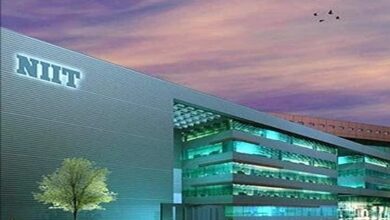PM Modi to meet PM Lawrence Wong, visit semiconductor facility during his visit to Singapore today
PM Modi Arrived In Singapore : Prime Minister Narendra Modi and his Singaporean colleague are expected to visit a state-of-the-art semiconductor factory in the city-state on Thursday, the second day of Modi’s visit.
On Thursday, PM Modi, who arrived in Singapore on Wednesday, is expected to attend a number of events in the nation-state. The bilateral relations between Singapore and India are expected to be strengthened even further by this visit.

This tour has highlighted the rising importance of the semiconductor industry, which has the potential to advance India’s technical capabilities and strengthen bilateral economic relations.
PM Modi will be formally welcomed to Singapore’s Parliament House at the start of the day. This will be followed by a meeting with Prime Minister Lawrence Wong and the signing of several Memorandums of Understanding (MoUs).
Following a lunch given by Senior Minister Lee Hsien Loong, PM Modi will accompany Singapore’s Prime Minister to a semiconductor factory owned by AEM Holdings Ltd. Additionally, he will meet with Emeritus Senior Minister Goh Chok Tong and President Tharman Shanmugaratnam. After meeting with CEOs for business, PM Modi will go back to New Delhi.
In terms of expanded trade prospects between the two friendly nations, PM Modi’s visit to the semiconductor sector is noteworthy since, despite its small size, Singapore has a thriving semiconductor industry.
The semiconductor industry presents India with numerous opportunities. These include joint efforts in talent development, as Singaporean universities have tailored their courses specifically for the semiconductor industry, and exchange of knowledge regarding optimal techniques for managing semiconductor industrial parks, known as Wafer Fab Parks in Singapore.
Singapore has labor and land constraints when it comes to manufacturing aspects. India may be a link in Singapore’s semiconductor value chain because of its large landmass and highly qualified workforce. It is advisable to encourage Singaporean semiconductor businesses to contemplate expanding into India.
Manufacturers of semiconductor materials and equipment are also located in Singapore. Interaction and cooperation with these businesses may also be beneficial for the growth of the semiconductor manufacturing ecosystem in India.
Based on information gathered by the government, Singapore, a city-state in Southeast Asia, accounts for around 10% of the world’s semiconductor manufacturing, 5% of the world’s wafer fabrication capacity, and 20% of the world’s semiconductor equipment production. The semiconductor industry accounts for 8% of the increase in Singapore’s GDP.
Nine of the top 15 semiconductor companies, according to the statistics, have established offices in Singapore.
All three stages of the semiconductor value chain are represented in Singapore:
i) IC design (MediaTek, Realtek, Qualcomm, Broadcom, Maxlinear, AMD)
ii) assembly, packaging, and testing (ASE Group, Utac, STATS ChipPack, Silicin Box). GlobalFoundries, UMC, Siltronic, and Micron are involved in wafer manufacturing
iii) Soitec and Applied Materials are makers of equipment and raw materials.
iv) In search of more affordable labor and a workforce with adequate skills, US chip manufacturers began outsourcing portions of their manufacturing process to Southeast Asia, notably Singapore, in the 1960s.
Since manufacturing generates high wages in Singapore’s largely service-based economy, the government actively encourages such investments.
Infrastructure and connectivity, stable business environments, a critical mass of top Singaporean companies spanning the entire value chain (from design to wafer fabrication to assembly and testing), and human capital all played a role in the growth of the country’s semiconductor industry.
Currently, four 374-hectare wafer manufacturing parks—where the Singaporean government provides investors with specialized infrastructural solutions—house the majority of the country’s semiconductor operations.
In an effort to cultivate talent, universities in Singapore are partnering with semiconductor businesses by having staff members do PhD research and by providing majors in microelectronics and IC design.
As a safe bet in the US-China rivalry age, Singapore is now reaping the benefits of a worldwide emphasis on de-risking and enhancing supply chain resilience.
United Microelectronics Corporation, based in Taiwan, said in 2022 that it will spend USD 5 billion to establish a semiconductor factory. It is anticipated to start up in 2024. GlobalFoundries opened its new $4 billion manufacturing facility in Singapore in September 2023. Specialty chips with 28 nm node technology (the most advanced in Singapore) may be produced at this site.
A USD 7.8 billion joint venture for a Singapore plant (named VisionPower Semiconductor Manufacturing Company) that will make 40 to 130 nm chips for the automotive, industrial, consumer, and mobile market segments was announced in June 2024 by NXP Semiconductors and TSMC-backed Vanguard International Semiconductor Corp. With production beginning in 2027, construction is scheduled to start in the second part of 2024.

The “mature-node chips” (process node technology of 28 nm or higher) used in automobiles, appliances, and industrial equipment are the only products of Singapore’s semiconductor sector. It lacks the capacity to produce sophisticated logic circuits like those used in the artificial intelligence (AI) industry, which employ process nodes that are smaller than 7 nm and need for unique manufacturing techniques.
It is not anticipated that Singapore’s semiconductor sector would lead to AI chips. One argument is that Singapore does not need to concentrate on AI chips since the market for mature-node chips is significantly bigger and has consistent development prospects. Another perspective is that the production of AI chips requires significant financial outlays, which are beyond the means of Singapore’s current businesses, and which major players like TSMC, Samsung, and Intel have already made abroad.
Due to rising manufacturing costs, semiconductor businesses are being forced to diversify their low-cost, labor-intensive operations outside of Singapore and advance up the value chain.
Huge incentives are being offered by several nations to entice semiconductor investments. No matching program has been launched by Singapore. Singapore seems to be depending on its natural advantages. Over time, it’s probable that Singapore’s proportion of the world’s semiconductor output would decline as a result of this competition from other nations.
Over many decades, Singapore has successfully carved out a position for itself in the global semiconductor value chain. To maintain its position, Singapore is making investments in both physical and soft infrastructure. However, the US-China competition and increased focus on de-risking are changing the global landscape and pushing big economies—including India—to establish their own semiconductor industries. This may not have an immediate effect on Singapore, but when combined with the country’s limited labor and land resources, rising manufacturing costs, and other factors, it might seriously jeopardize Singapore’s standing in the world semiconductor market.





